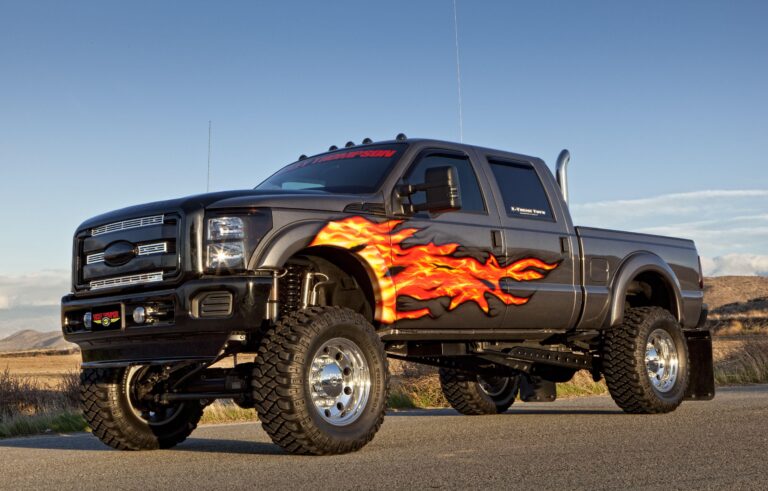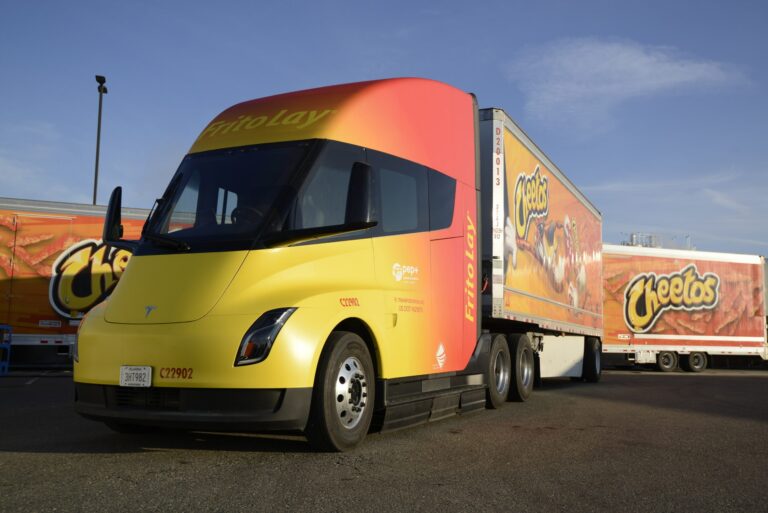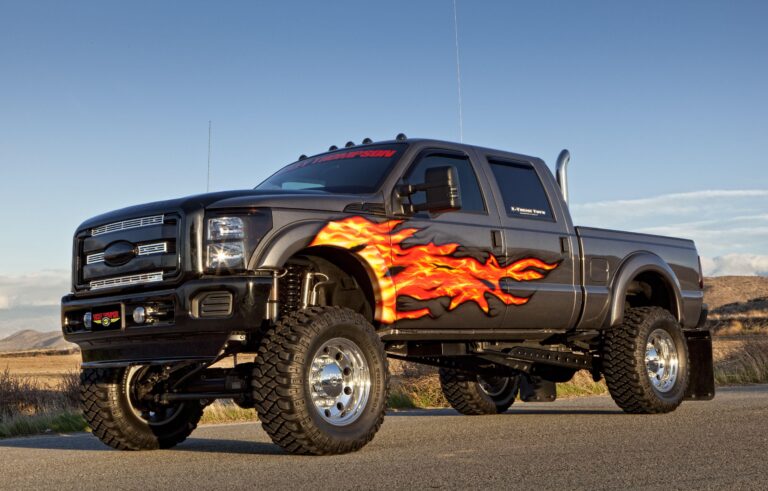Parts Of Trucks In English: A Comprehensive Guide to Understanding Your Heavy-Duty Machine
Parts Of Trucks In English: A Comprehensive Guide to Understanding Your Heavy-Duty Machine cars.truckstrend.com
Trucks are magnificent feats of engineering, designed to haul heavy loads, traverse vast distances, and perform demanding tasks. From the roaring engine of a semi-truck to the robust chassis of a dump truck, each component plays a crucial role in its overall functionality and safety. Understanding the "parts of trucks in English" is not merely an academic exercise; it’s a fundamental skill for drivers, mechanics, logistics professionals, and anyone involved in the transportation industry. This comprehensive guide will dissect the anatomy of a truck, providing clear terminology and insights into the function and importance of its various components, empowering you with the knowledge to maintain, troubleshoot, and appreciate these powerful machines.
The Foundation: Understanding the Major Systems
Parts Of Trucks In English: A Comprehensive Guide to Understanding Your Heavy-Duty Machine
A truck is not just one big machine; it’s an intricate network of interconnected systems, each comprising numerous individual parts. For clarity, we can categorize these parts into several major systems:
1. The Powertrain: The Heart and Muscle
The powertrain is arguably the most critical system, responsible for generating and transmitting power to move the truck.
- Engine: The powerhouse of the truck.
- Engine Block: The main structure housing the cylinders.
- Cylinder Head: Sits atop the engine block, containing valves, camshafts (sometimes), and spark plugs/injectors.
- Pistons: Reciprocating components that move within the cylinders, converting combustion into mechanical energy.
- Crankshaft: Converts the linear motion of the pistons into rotational motion.
- Camshaft: Controls the opening and closing of engine valves.
- Turbocharger/Supercharger: Forces more air into the engine for increased power.
- Fuel Injectors: Deliver fuel into the combustion chambers.
- Exhaust Manifold: Collects exhaust gases from cylinders and directs them to the exhaust system.
- Oil Pan: Reservoir for engine oil.
- Radiator: Dissipates heat from the engine coolant.
- Fan: Draws air through the radiator for cooling.


- Transmission: Manages the power output from the engine, allowing the driver to select different gears for varying speeds and loads.
- Manual Transmission: Requires manual shifting by the driver, using a clutch to disengage the engine from the transmission during shifts.
- Automatic Transmission: Shifts gears automatically.
- Automated Manual Transmission (AMT): A manual transmission with an automated shifting mechanism.
- Driveline: Transmits power from the transmission to the drive wheels.
- Driveshaft (Propeller Shaft): Connects the transmission to the differential.
- Differential: Allows the drive wheels to rotate at different speeds when turning.
- Axles: Shafts connecting the differential to the wheels. Trucks often have multiple axles (front steer axle, drive axles, tag axles, lift axles).
![]()
2. Chassis and Suspension: The Backbone and Shock Absorbers
The chassis forms the structural backbone of the truck, while the suspension system ensures a smooth ride and proper handling.
- Frame: The main structural component of the truck, typically a ladder-style frame made of heavy-duty steel rails.
- Suspension System: Cushions the ride and maintains tire contact with the road.
- Leaf Springs: Traditional heavy-duty suspension components, consisting of layered steel plates.
- Air Bags (Air Suspension): Inflatable rubber bags that use compressed air to support the load and provide a smoother ride, often found on modern trucks.
- Shock Absorbers (Dampers): Control the bouncing motion of the springs.
- Control Arms/Radius Rods: Connect the axle to the frame, controlling wheel movement.
- Steering System: Allows the driver to control the direction of the truck.
- Steering Wheel: The primary input device for the driver.
- Steering Column: Connects the steering wheel to the steering gear.
- Steering Gearbox (Steering Box): Converts the rotational motion of the steering wheel into linear motion.
- Pitman Arm, Drag Link, Tie Rods: Components that transmit steering motion to the wheels.
- Power Steering Pump: Provides hydraulic assistance for easier steering.
- Braking System: Essential for slowing down and stopping the truck safely.
- Air Brakes: Common in heavy-duty trucks, using compressed air to actuate the brakes.
- Air Compressor: Generates compressed air.
- Air Tanks (Reservoirs): Store compressed air.
- Brake Chambers: Convert air pressure into mechanical force.
- Slack Adjusters: Adjust brake shoe clearance.
- Brake Drums/Discs: Rotational components that friction material presses against.
- Brake Shoes/Pads: Friction material that creates stopping power.
- ABS (Anti-lock Braking System): Prevents wheels from locking up during braking.
- Hydraulic Brakes: Used in lighter trucks, similar to passenger cars, using hydraulic fluid.
- Air Brakes: Common in heavy-duty trucks, using compressed air to actuate the brakes.
3. Electrical and Electronic Systems: The Brain and Nervous System
Modern trucks rely heavily on complex electrical and electronic systems for everything from starting the engine to managing advanced safety features.
- Battery: Stores electrical energy to start the engine and power accessories.
- Alternator: Recharges the battery and powers the electrical system while the engine is running.
- Starter Motor: Engages the flywheel to crank the engine.
- Wiring Harness: Bundles of wires that transmit electrical signals and power throughout the truck.
- ECU/ECM (Engine Control Unit/Module): The "brain" of the engine, controlling fuel injection, ignition, and emissions.
- Sensors: Monitor various parameters (temperature, pressure, speed, etc.) and send data to the ECU.
- Lights: Headlights, tail lights, turn signals, marker lights, brake lights – crucial for visibility and communication.
- Fuses and Relays: Protect electrical circuits and control power flow.
4. Cab and Interior Components: The Driver’s Command Center
The cab is the driver’s workspace and living area, designed for comfort, control, and safety.
- Dashboard (Instrument Panel): Houses gauges (speedometer, tachometer, fuel, oil pressure, temperature, air pressure) and warning lights.
- Steering Wheel: For directing the truck.
- Seats: Ergonomically designed, often air-ride seats for long-haul comfort.
- HVAC System (Heating, Ventilation, Air Conditioning): Maintains cabin climate.
- Pedals: Accelerator, Brake, Clutch (if manual).
- Gear Selector/Shifter: For changing gears.
- Mirrors: Side mirrors (often heated and power-adjustable), convex mirrors for wider view.
- Sleeping Berth/Sleeper Cab: For long-haul trucks, provides a resting area for the driver.
5. Body and Exterior Components: The Shell and Functionality
These parts define the truck’s appearance and contribute to its specific function.
- Hood: Covers the engine compartment.
- Fenders: Protect the wheels and body from debris.
- Grille: Front opening for air intake to the radiator.
- Doors: For entry and exit.
- Fuel Tank: Stores diesel or gasoline.
- Exhaust System: Directs exhaust gases away from the engine, including mufflers and catalytic converters.
- Fifth Wheel (for Semi-Trucks): A coupling device on the tractor that connects to and supports the front of a semi-trailer.
- Trailer Hitch/Coupler (for lighter trucks): Connects the truck to a trailer.
- Dump Body/Flatbed/Box Van (for specialized trucks): The specific cargo-carrying structure.
6. Wheels and Tires: The Contact with the Road
The only parts of the truck that directly touch the road, crucial for traction, braking, and steering.
- Rims (Wheels): The metal structure that the tire mounts on.
- Tires: Rubber components that provide grip, absorb road shock, and support the vehicle’s weight.
- Tread: The patterned part of the tire that contacts the road.
- Sidewall: The side of the tire.
- Valve Stem: For inflating the tire.
- Hubs: Connect the wheel to the axle.
- Lug Nuts/Bolts: Secure the wheel to the hub.
The Importance of Knowing Your Truck Parts
Understanding these components goes beyond mere vocabulary. It offers practical benefits:
- Effective Communication: Being able to accurately describe a problem to a mechanic saves time and ensures the correct repair.
- Routine Maintenance: Knowing what to check (e.g., fluid levels, tire pressure, brake wear) allows for proactive maintenance, preventing costly breakdowns.
- Troubleshooting: Identifying unusual noises, smells, or warning lights becomes easier when you know which system or part might be involved.
- Safety: A deep understanding of critical components like brakes, steering, and tires is paramount for safe operation.
- Cost Savings: Informed decisions about parts replacement and repairs can lead to significant savings.
Practical Advice and Actionable Insights
- Consult Your Owner’s Manual: This is your truck’s bible. It provides detailed information on specific parts, maintenance schedules, and troubleshooting tips for your particular model.
- Perform Regular Pre-Trip Inspections: Familiarize yourself with the visual checks of key components like tires, lights, fluid levels, and air lines before every journey.
- Listen to Your Truck: Pay attention to unusual noises (squeals, grinding, clunks), vibrations, or changes in performance. These are often early warnings of a problem.
- Invest in Quality Parts: When replacements are needed, always opt for reputable brands and quality parts. Cheaper alternatives can lead to premature failure and more expensive repairs down the line.
- Don’t Ignore Warning Lights: Modern trucks have sophisticated diagnostic systems. A warning light on your dashboard is a signal that something needs attention.
- Seek Professional Help: While basic knowledge is empowering, complex repairs or diagnostics should always be left to certified truck mechanics.
Challenges and Solutions
- Complexity: Trucks are intricate. Break down your learning into manageable sections (e.g., focus on the engine first, then the brakes).
- Part Obsolescence: Older trucks might have parts that are harder to find. Solution: Network with specialized suppliers or consider remanufactured parts.
- Counterfeit Parts: Be wary of unusually cheap parts. They can be dangerous and unreliable. Solution: Buy from authorized dealers or trusted aftermarket suppliers.
- Specialized Tools: Many truck repairs require specific heavy-duty tools. Solution: Don’t attempt repairs without the right equipment; rely on professionals.
Illustrative Table of Truck Part Categories and Estimated Price Ranges
It’s impossible to provide a definitive price list for all truck parts as prices vary immensely based on truck make, model, year, part quality (OEM vs. aftermarket), supplier, and labor costs. However, this table offers illustrative price ranges for common categories of parts to give you a general idea.
| Part Category | Example Parts | Estimated Price Range (Parts Only, USD) | Notes |
|---|---|---|---|
| Engine Components | Fuel Injector, Water Pump, Turbocharger, Radiator | $100 – $5,000+ | Major components like engine blocks can be $10,000+. |
| Transmission/Clutch | Clutch Kit, Transmission rebuild kit, Solenoid | $300 – $4,000+ | Complete new transmissions can be $5,000 – $20,000+. |
| Braking System | Brake Pads/Shoes, Brake Drum, Air Chamber, ABS Sensor | $50 – $500+ per component | Full air brake system overhaul can be several thousand dollars. |
| Suspension | Leaf Spring, Air Bag, Shock Absorber | $100 – $800+ per component | Air bags tend to be more expensive than leaf springs. |
| Steering System | Tie Rod End, Steering Gearbox, Power Steering Pump | $80 – $1,500+ | Steering gearboxes are major components. |
| Electrical System | Battery, Alternator, Starter Motor, Headlight | $80 – $1,000+ | Batteries are relatively inexpensive, alternators/starters more. |
| Wheels & Tires | Truck Tire (single), Steel Wheel Rim | $200 – $600+ (tire), $150 – $400 (rim) | Prices vary greatly by tire type (drive, steer, trailer) and brand. |
| Exterior/Body | Side Mirror, Grille, Fuel Tank | $100 – $1,000+ | Large body panels can be significantly more. |
| Interior/Cab | Seat (air-ride), Dashboard Gauge, HVAC Blower Motor | $50 – $1,500+ | High-end seats can be $2,000+. |
Disclaimer: These are highly generalized estimates for parts only and do not include labor costs, which can significantly add to the total repair bill. Actual prices will vary.
Frequently Asked Questions (FAQ)
Q1: What’s the difference between OEM and Aftermarket parts?
A1: OEM (Original Equipment Manufacturer) parts are made by the original company that supplied the part to the truck manufacturer. Aftermarket parts are made by other companies and are designed to function the same as OEM parts. OEM parts are generally more expensive but guaranteed to fit and perform. Aftermarket parts can be more affordable but vary in quality and fit.
Q2: How often should I replace my truck’s tires?
A2: Tire replacement depends on mileage, tread wear, and age. Commercial truck tires are often replaced when the tread reaches a certain minimum depth (e.g., 4/32 inch for steer tires, 2/32 inch for drive/trailer tires). Always check for signs of cracking, bulges, or uneven wear, regardless of mileage.
Q3: What’s the purpose of the fifth wheel on a semi-truck?
A3: The fifth wheel is a coupling device mounted on the tractor (the truck itself) that connects to and supports the front end of a semi-trailer. It allows the trailer to pivot during turns and distributes weight effectively.
Q4: Why are air brakes used on heavy-duty trucks instead of hydraulic brakes?
A4: Air brakes are preferred for heavy-duty trucks because they are more powerful, reliable, and safer for large, heavy vehicles. They provide consistent braking performance even with heavy loads, and air pressure allows for easier integration with features like ABS and automatic slack adjusters.
Q5: Can I perform truck repairs myself?
A5: Basic maintenance like checking fluid levels, inspecting tires, and replacing light bulbs can often be done by the owner. However, complex repairs involving the engine, transmission, braking system, or electrical systems typically require specialized tools, diagnostic equipment, and expertise. It’s always safer and often more cost-effective in the long run to consult a certified heavy-duty mechanic for significant repairs.
Conclusion
Understanding the "parts of trucks in English" is an invaluable asset for anyone operating, maintaining, or managing these essential vehicles. From the mighty engine to the smallest sensor, each component plays a vital role in ensuring the truck’s performance, safety, and longevity. By familiarizing yourself with the terminology and functions discussed in this guide, you equip yourself with the knowledge to communicate effectively, perform preventative maintenance, identify potential issues early, and make informed decisions that contribute to safer roads and more efficient operations. A well-understood truck is a well-maintained truck, ready to tackle any journey.






